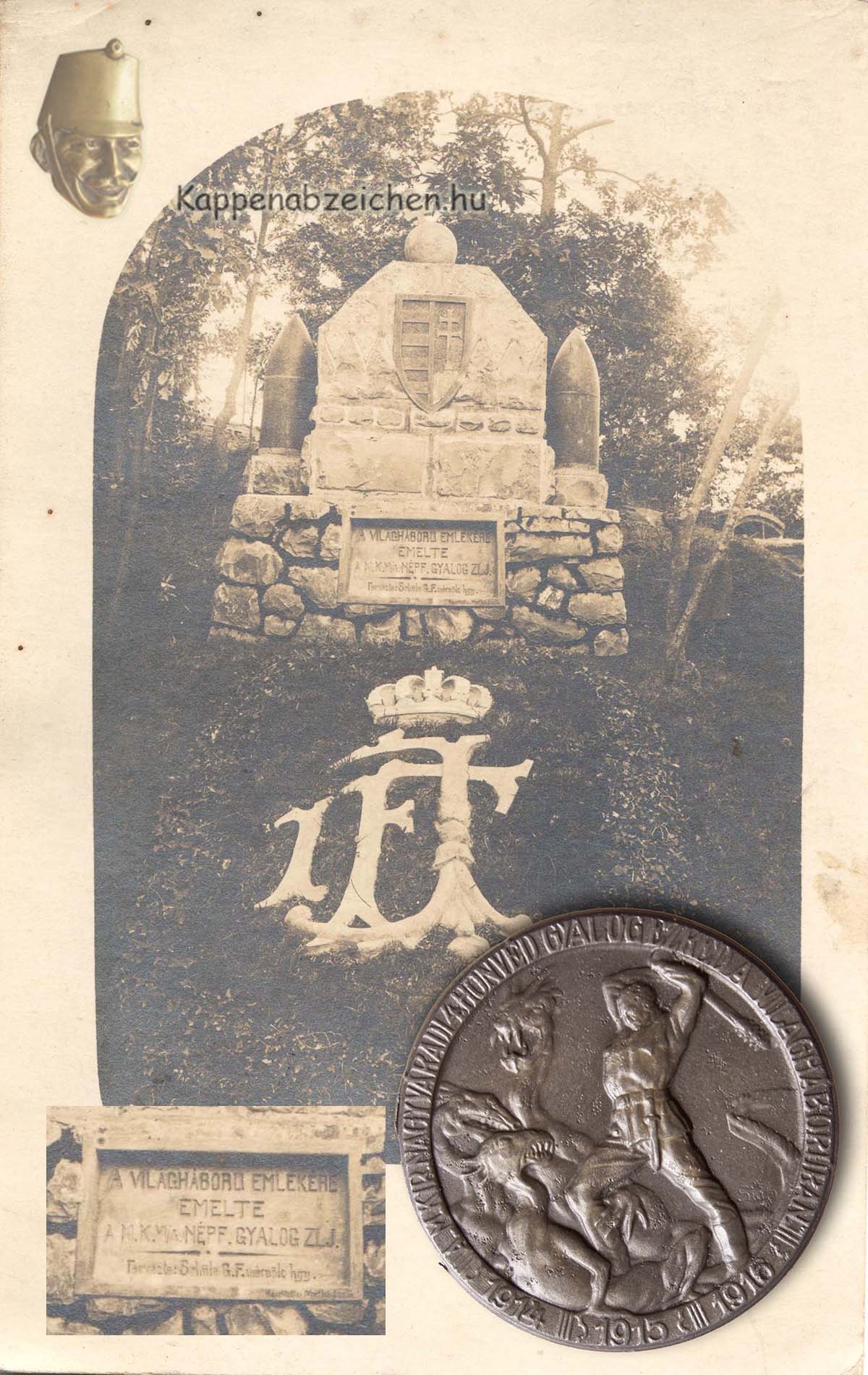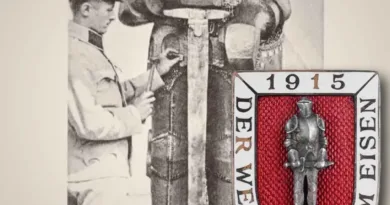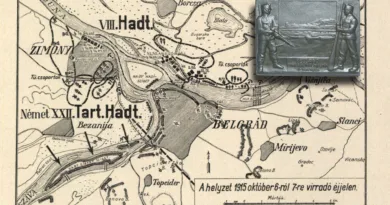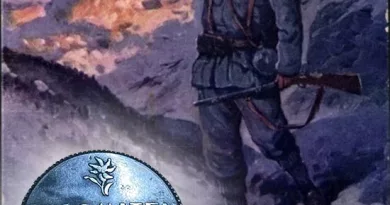Plava-Globna: monument of the 4th insurgents
In quieter periods, the troops erected monuments near the front line, tried to make their surroundings livable. The camps and smaller settlements where they rested were the most suitable for this. The postcard attached to the post shows the monument of the VI/4 Insurgent Infantry Battalion.
The correspondence sheet was dated July 18, 1916 and sent by Lieutenant Sándor Lázár. On the card, the name of the place is only indicated “Isonzófront”. In relation to the insurgent battalions, it has already been mentioned several times that after 1915 the remaining regiments and battalions were used as combat units on a par with regular regiments. They were equipped accordingly (e.g. they were given an adequate number of machine guns, a pioneer section, etc.), and in the reinforcements no longer were completed by members of the reserve age groups. This is how it was possible that the brave insurgents were sent to the most dangerous front lines and were able to stand their ground there.
The memorial album of the 4th honvéd regiment describes one of the outstanding military deeds of the VI/4th Insurrection Battalion, the defense of the Plava-Globna front section in the 10th Isonzo Battle. The battle took place in May 1917, but as the published picture shows, the battalion was already active on this front in the summer of 1916. Moreover, they also erected a monument, which presumably could have stood in the village of Griljevse or Dragovice, where the battalion headquarters operated. The battalion was assigned to the 121st Brigade, 62nd Division.
In October 1916, according to the attached map sketch, the Italian attackers had already managed to establish a bridgehead near Plava, namely by occupying the 383 high point. Two military bridges were also built in the cover of the steeply rising hill on the banks of the Isonzó, which the Austro-Hungarian artillery could not shell effectively. At the northern foot of the hill lies the village of Globna, which was protected by the 4th insurgents. The hill was defended by the III/69 and II/52 infantry battalions.
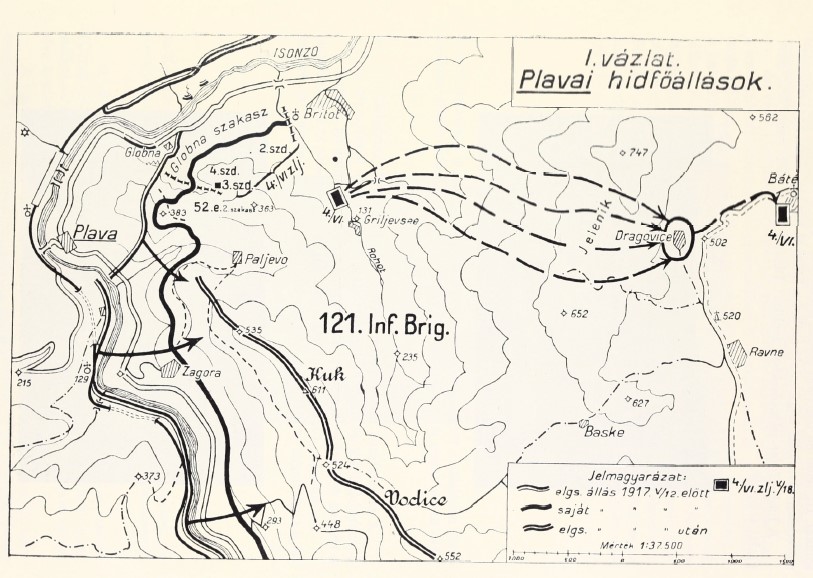
On May 12, 1917, the battalion was just preparing to be replaced, when the Italian attack, the 10th Battle of Isonzo, began with snare fire. The Italians achieved results in the southern part of the front. Between May 15 and 18, they occupied the Kuk and Vodice heights and extended their bridgehead position. They could not break through the positions of the insurgents to the north. The Italian attack gaining ground in the south threatened to encircle the battalion. Therefore, at dawn on May 19, they left the riverside positions and retreated to the village of Dragovice in the area behind. The 747 hill (Jelenik) towering in front of the village became the reference point of the new front line. The resistance of the battalion, which persisted in its positions for 7 days, enabled the orderly withdrawal of the front section. Captain József Csethe, battalion commander, was awarded the 3rd class Order of the Iron Crown for his performance in organizing the defense.

I was not able to find out details about the exact location and subsequent fate of the monument shown in the photo. I can attach to the post the well-known dragon slayer cap badge of the 4th honvéd infantry regiment.

